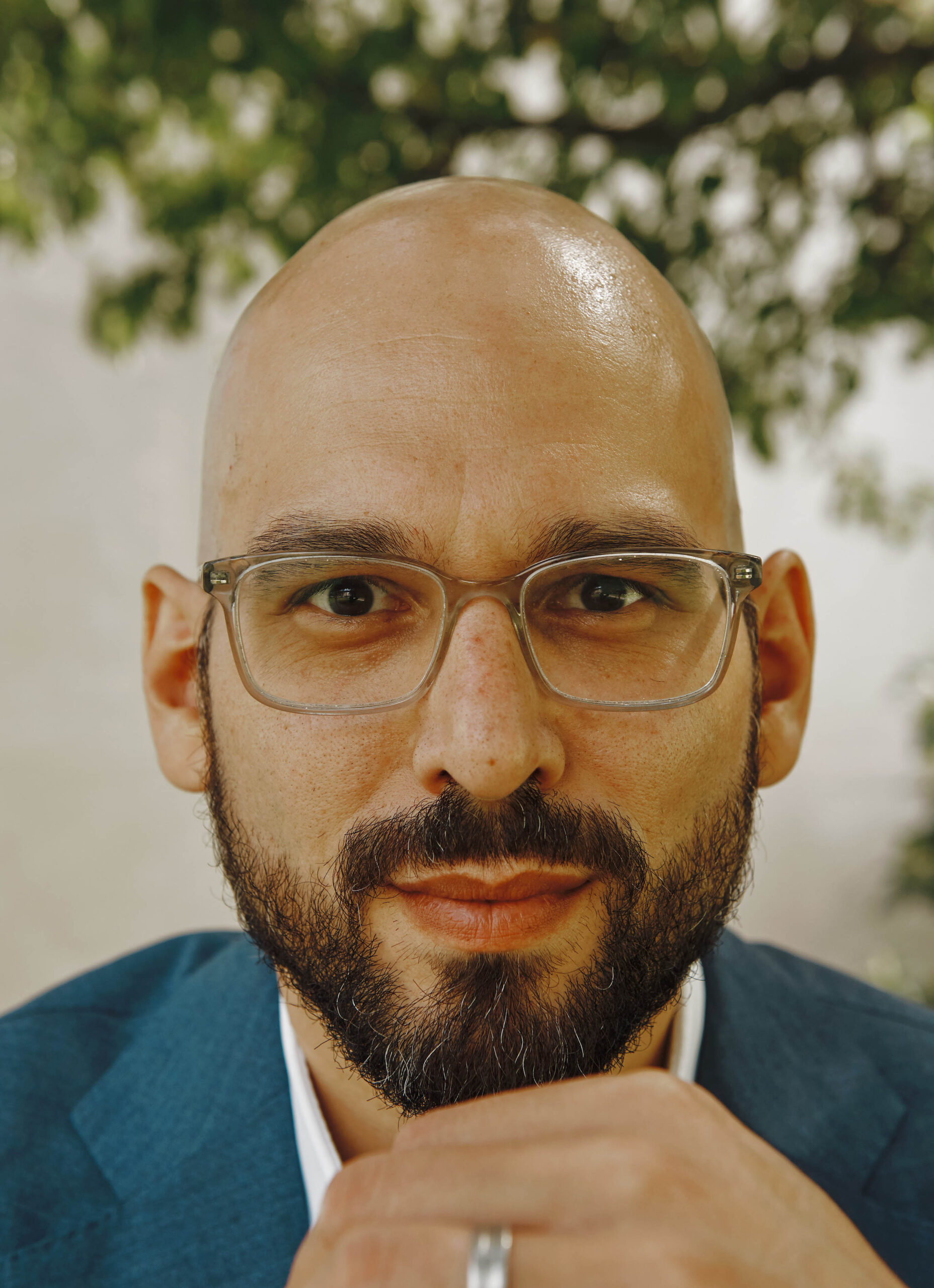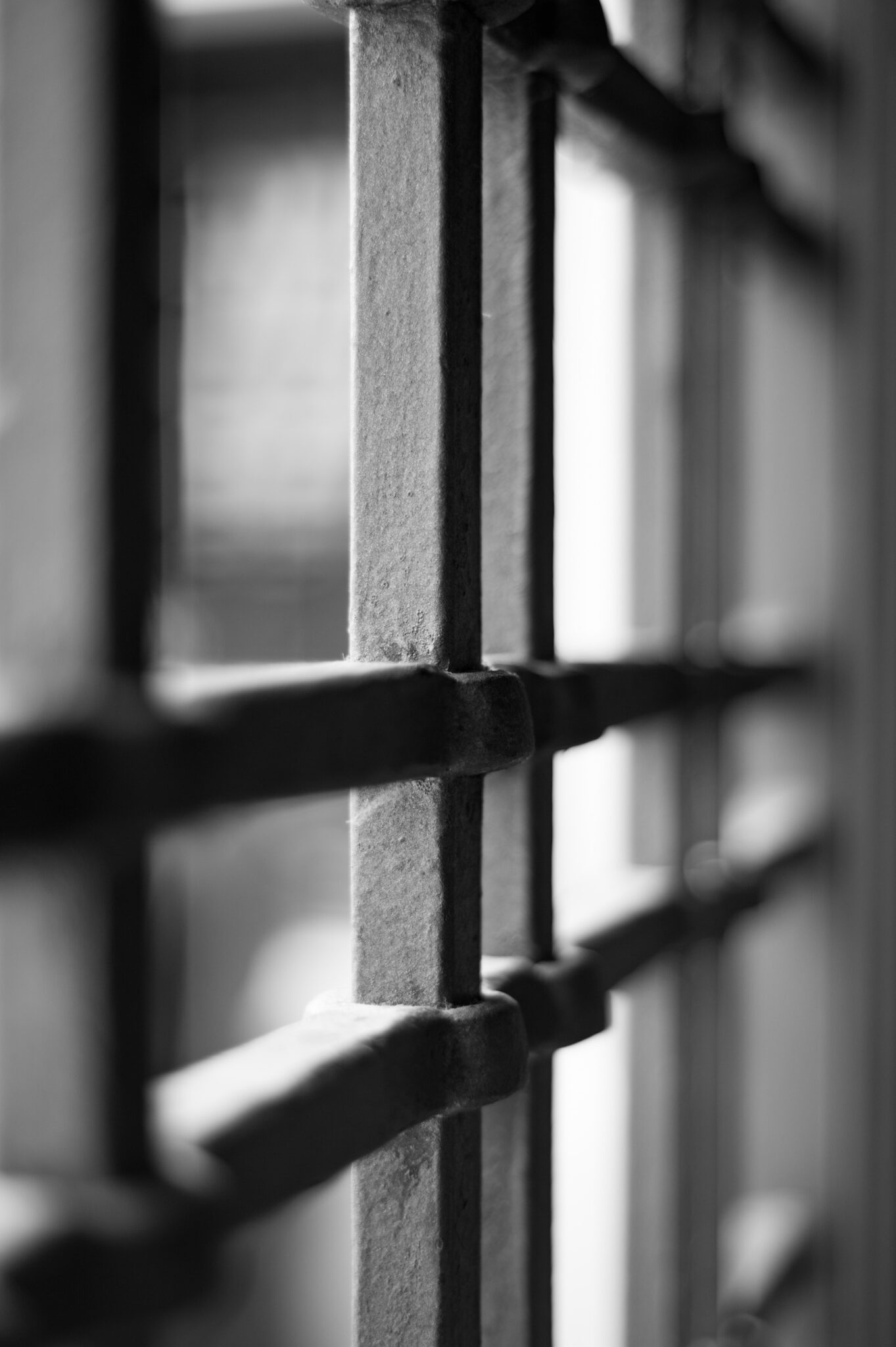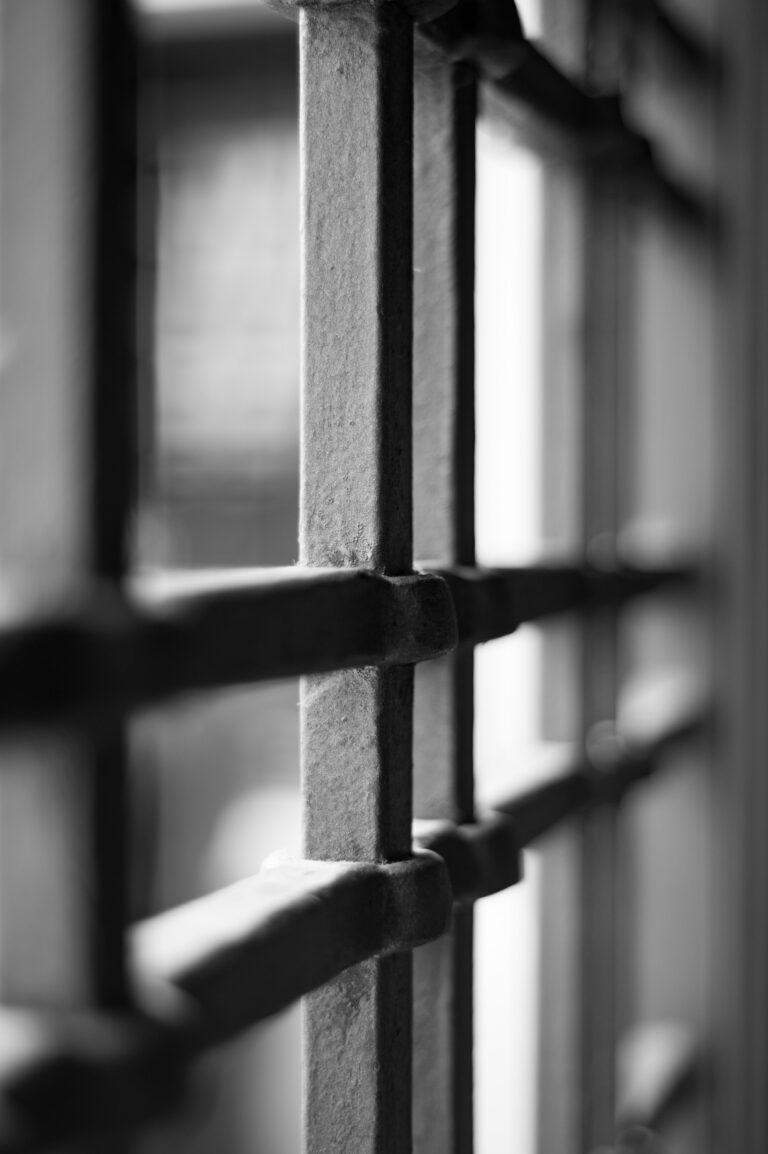
Andrew Manuel Crespo is the Morris Wasserstein Public Interest Professor of Law at Harvard Law School, where he teaches criminal law and procedure and serves as the Executive Faculty Director of the Institute to End Mass Incarceration.
This post was originally published on the Law and Political Economy (LPE) Blog.
Social movements are surging in ways unseen in a generation, with issues of racial justice and workers’ rights at the fore. Within a span of years, Black Lives Matter has become “the largest movement in U.S. history.” At the same time, the labor movement has seen a rise not just in union filings and successful strikes but in public support as well. Historically, these two movements have not been the same. But their souls are knit. The harms they fight stem from interwoven roots, giving them what community organizers would call overlapping “stories of us and of now,” the narratives of injustice and of hope that spur collective action.
But might these movements also overlap at the more particular level of strategy and tactics? That narrower question has preoccupied me for more than fifteen years, stretching back to my first encounters with American-style plea bargaining. When I was a public defender, I advised scores of individuals — almost all of them Black men — as they considered plea deals placed before them by the state. Each time that I conveyed a plea offer, I watched their eyes fall as they wrestled with the cruelty of it all. The oppressive weight of prison, masquerading behind the façade of a supposedly welfare-maximizing choice. A “bargain.”
It was obvious from the start that what was happening here was anything but. Nor did it take long for me to question my role in it all. The words of Albert Alschuler, which I’d first encountered as a law student, echoed regularly in my ears: “A guilty plea entered at gun point is no less involuntary because an attorney is present to explain how the gun works.” As a lawyer, I could calculate and compare the sentencing ranges associated with any given plea deal. I could offer careful advice about the pros and cons of the different options. But the people confronting these choices needed more than information and advice. They needed power.The power to fight back.
Watching each client face these pressures – one after another, alone – it was clear they would never generate that power in isolation. And it was just as clear that it wouldn’t, and couldn’t, simply be handed to them by a lawyer. Their power would have to be their own, and it could only be built together.
This is where tactical lessons, including some borrowed from the labor movement, seem to hold promise. The very idea of plea bargaining, after all,gestures tantalizingly at a powerful set of related ideas. Ideas like collective bargaining. And, not far behind that, the idea of unions. Maybe even the idea of a strike. In short, the idea of defendants standing united against the forces holding them down.
What might such collective action look like?
Imagining a Strike
Consider first the collective tactic most closely associated with (some might say constitutive of) labor power: the strike. The idea that criminal defendants could go on strike is not new. As far back as 1937, Massachusetts Supreme Court Justice Henry Lummus observed that if “all the defendants should combine to refuse to plead guilty, and should dare to hold out, they could break down the administration of criminal justice in any state in the Union.”
Over the ensuing decades the idea of a plea strike resurfaced from time to time among scholars, practitioners, and organizers. Most famously, it appeared in the pages of the New York Times, in an exchange between formerly incarcerated organizer Susan Burton and Michelle Alexander. “What would happen,” Burton asked Alexander, “if we organized thousands, even hundreds of thousands, of people charged with crimes to refuse to play the game, to refuse to plea out? What if they all insisted on their Sixth Amendment right to trial? Couldn’t we bring the whole system to a halt just like that?”
Burton’s questions bristle with decarceral possibility. But to speak them aloud is to risk an incredulous response. Indeed, that was Alexander’s initial reaction to Burton: “Could she be serious?” Alexander asked herself. Or, perhaps more optimistically: Could this be real?
As I’ve written elsewhere, I think the answer to that question is yes. The American penal system is astonishingly vulnerable to the real and serious threat of defendant collective action. The reason is simple: the system is massively overleveraged. It is the largest system of human incarceration in the history of the world. But it purchased its scale on the cheap, at plea bargaining rates. The system, in other words, is both an outgrowth of and also dependent upon plea bargaining for its existence. To quote the U.S. Supreme Court, it is “a system of pleas.”
To appreciate why this is so, one has to fully absorb the resource constraints shaping the behavior of the system’s key administrators: the prosecutors and judges whose legal decisions transform free people into prisoners. In courthouses across the country, prosecutors routinely handle over one thousand felony cases each year. This translates to hundreds of open cases at any given time and multiple cases scheduled for trial every day. That is not a tenable equation for the carceral state. No prosecutor can try multiple cases in different courtrooms at once, let alone prepare hundreds of cases for trial at the same time. It is thus impossiblefor the system to do what the Sixth Amendment and countless television dramas suggest should be or is the norm: provide people charged with crimes “the right to a speedy and public trial” in “all criminal prosecutions.”
In fact, decades of constitutional doctrine ensure that every single criminal trial will be an almost inescapably expensive undertaking for the state. Defendants have a constitutional entitlement not only to a trial but also to summon and assemble a jury; to cross-examine every prosecution witness about every element of every offense; to subpoena witnesses and to put on a defense of their own; to compel the prosecutor to produce certain labor-intensive forms of pretrial discovery; and to litigate pretrial motions related to a range of issues, some of which require evidentiary hearings to resolve. On top of all of that, they are entitled to a lawyer, paid for by the state,who can litigate all these rights aggressively in court.
To be clear, the United States currently sinks hundreds of billions of dollars each year into the penal system, money the federal government itself has said would be far better spent on welfare-enhancing social programs. But even still, the state allocates nowhere close to the resources that would be needed to sustain mass incarceration’s endless convictions while adhering to the basic constitutional processes outlined above. Nowhere close.
Plea bargaining is how the system bridges that resource chasm. As Bill Stuntz once explained, it is the mechanism by which the state converts millions of “potential trials into guilty pleas,” which “are not simply cheaper than trials” but “enormously cheaper.” And with roughly 95 percent of all convictions arising from guilty pleas, the alchemy works. To quote Alschuler again, “By lowering the price of imposing criminal punishment, plea bargaining gave America more of it.” A lot more.
Of course, prosecutors know this. And sometimes they even admit it. Here, another person’s words echo in my ears: “Prosecutors cling to plea bargaining as a survival instinct.” This line belongs to Dan Satterberg, who served as chief prosecutor in Seattle, Washington, for fifteen years. He elaborates:
My office files about 7,000 felony cases a year. We do four to five hundred trials. And we are packed. Our people can’t do more than that… We’ve settled on an equilibrium in major city court systems where about a 3 percent trial rate is considered a healthy trial rate. And it’s really about all we can do.
This is a jaw-dropping statistic. Compare it to the thresholds required for successful labor organizing. Labor organizers need thirty percent of the workers at a given jobsite to sign union cards in order to trigger a union election. They need to win over fifty percent of all workers at the site to form a union. In many cases, they need a majority of those union members to authorize a strike. And, as Jane McAlevey writes, for “strikes to be successful in the United States, they require no less than 90 percent participation of workers.”
By contrast, a mere three percent of criminal defendants in a given courthouse could bring their local penal system to its knees. If that many defendants banded together and refused to plead guilty, they could immediately double the trial rate in that courthouse (from three percent to six percent). This would massively expand the resource demands on a system that is already operating at full capacity. There is not a major court system in the country that could absorb such a shock.
Three percent. And the whole thing could come grinding to a halt.
Imagining a Union
Of course, there’s another side to the story. Strike opponents have power, too. In the context of plea strikes, that power is dramatic: Prosecutors can send people to prison, potentially for a very long time. And they could use that power to try to crush a plea strike before it ever starts.
Lummus, the Massachusetts justice writing back in 1937, captured this dynamic. “The prosecutor,” he wrote, “is like a man armed with a revolver who is cornered by a mob. A concerted rush would overwhelm him, but each individual in the mob fears that he might be one of those shot during the rush.” As economists have modeled, prosecutors could leverage this fear to maximal effect by strategically focusing their attention on the strike’s leading edge, threatening the first wave of defendants with massive sentences (or offering them irresistible deals) all in hopes of unraveling the strike before it starts.
Prison imposes severe, enduring harm. In a plea strike, there is a real risk that some people – especially strike leaders – will face greater exposure to prison, for longer periods of time. No responsible discussion of collective plea bargaining can minimize this risk.
At the same time, it is important not to presume how people facing the systemic harms of mass incarceration can, will, or should respond to that risk. Likewise, it is important to bear in mind two truths. First, the status quo of mass incarceration imposes its own risks and harms, every day, on tens of millions of people. And second, there is no historical example of collective action undertaken in the face of systemic oppression that did not involve risk. On the contrary, as labor scholars Benjamin Sachs and Kate Andrias observe, “fear of retaliation” can always “jeopardize collective action,” particularly when people attempt acts of solidarity in high-risk environments. Workers, renters, people in debt – all of them risk lost jobs, lost homes, and other frightening harms if targeted by their employers, landlords, or whomever else they might be organizing against. To be sure, imprisonment is a unique form of harm. But even that harm is not unfamiliar to labor and civil rights organizers who have faced threats of incarceration and violence throughout history.
And yet, as Sachs and Andrias go on to note, “retaliation and repression do not always defeat organization.” On the contrary, effective organizing aims precisely to overcome such threats, and deploys concrete skills to do so. As Marshall Ganz writes, organizers begin by crafting public narratives that spur people to action, “mobilizing sources of motivation, constructing new shared individual and collective identities, and finding the courage to act.” Crucially, they then reinforce that motivation and solidarity by taking real, concrete, strategic action that turns community resources into tactical wins. Those wins in turn foster what Sachs and Andrias describe as “a culture of solidarity that makes it possible for workers to persist, even in the face of antiunion campaigning, intimidation, and arrests.”
We ought not assume that people facing prosecution lack the same capacity to form and deploy the solidarity, resources, and brave strategic action that social movements throughout time have used to challenge oppression. On the contrary, just like labor and community organizers before them, striking defendants and their communities could find sources of inspiration and solidarity in their shared experiences. Coming together to fight the collective oppression of mass incarceration, they could support one other not only spiritually but materially, through strike funds and other forms of mutual aid that promise financial assistance and robust community support to anyone harmed by a strike — before, during, and after any periods of incarceration. They could also coordinate their actions strategically to minimize the risk of harm to strike participants, including by starting the strike in sectors of the courthouse where the risks are least serious, or by leveraging their insider knowledge about the strengths and weaknesses of their cases to try to sequence their proceedings in ways that are maximally disruptive while mitigating risk. Most of all, they could build enduring structures of solidarity that enable them to cultivate intra-community leadership, to marshal collective resources, to develop effective strategy, and to coordinate inspirational and effective action.
In short, people facing prosecution could form a union. And through it, they could pursue a wide range of emancipatory ends by leveraging their collective power — including the power to withhold that essential shared resource that the carceral state needs so desperately to survive: their pleas.
Imagining the Future
Having written about plea strikes at some length, people sometimes ask me for a bottom line. Should this tactic be attempted? If so, when, and where? And to what ultimate end?
I worry my answer to these questions – or more accurately, my reluctance to offer any – sometimes engenders disappointment. My reluctance, though, is I think unavoidable. Because the most essential questions about plea strikes and defendant unions aren’t mine to answer. As an academic and a lawyer, my modest goal in writing about this topic is to persuade at least a few additional people that these ideas can and should be taken seriously. That they are concrete tactics and not just abstractions. But the question of whether to deploy such tactics is not an academic one. It is a question that can only ever be answered through the actual work of organizing.
This means, in the words of Pilar Weiss and Raj Jayadev, that the most essential questions about plea strikes and defendant unions require a set of answers that “situates the community as the drivers of what the ultimate realization of a new vision of justice, healing, and power will look like.” Weiss and Jayadev write:
When we, as organizers, refer to “the community,” we are referring to individuals and their families, neighborhood, and those with a common interest and/or shared identity who are all directly impacted by structural inequalities. We don’t assume that there are any definitive answers at this point, but instead that we are in the middle of a process of finding ways to take power and define what justice in the name of “community” actually means….
Much of the current organizing that is happening is experimentation, with tactics and strategies looking to redefine the community’s role and power in the system…. They are part of the pathway to the future we seek to create. They are the start of how we reposition community, but they are not of themselves the ultimate goal.
This captures how I think of plea strikes and of the defendant unions and collectives that would be necessary to make such emancipatory tactics possible. Plea strikes and defendant unions are potentialities. They are tactics that organized communities could use when fighting the carceral state. They carry real risks. They also carry tremendous decarceral promise. Like so many related tactics being invented and deployed by organizers across the country, they can help us imagine a future without mass incarceration. And they can help us think concretely about the experiments in democracy that would be required to make that future real.







Daily News & Commentary
Start your day with our roundup of the latest labor developments. See all
July 15
The Department of Labor announces new guidance around Occupational Safety and Health Administration penalty and debt collection procedures; a Cornell University graduate student challenges graduate student employee-status under the National Labor Relations Act; the Supreme Court clears the way for the Trump administration to move forward with a significant staff reduction at the Department of Education.
July 14
More circuits weigh in on two-step certification; Uber challengers Seattle deactivation ordinance.
July 13
APWU and USPS ratify a new contract, ICE barred from racial profiling in Los Angeles, and the fight continues over the dismantling of NIOSH
July 11
Regional director orders election without Board quorum; 9th Circuit pauses injunction on Executive Order; Driverless car legislation in Massachusetts
July 10
Wisconsin Supreme Court holds UW Health nurses are not covered by Wisconsin’s Labor Peace Act; a district judge denies the request to stay an injunction pending appeal; the NFLPA appeals an arbitration decision.
July 9
the Supreme Court allows Trump to proceed with mass firings; Secretary of Agriculture suggests Medicaid recipients replace deported migrant farmworkers; DHS ends TPS for Nicaragua and Honduras